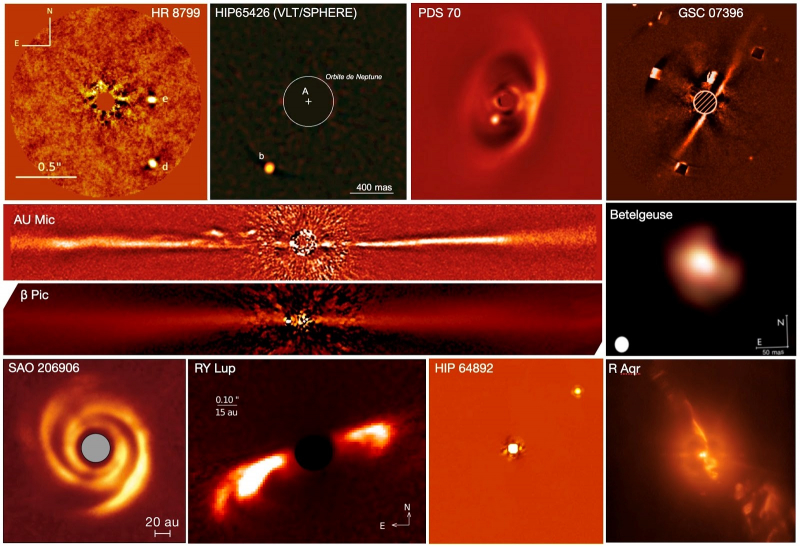SPHERE, twenty years of challenges and successes for exoplanets
The SPHERE consortium celebrates its 100th scientific publication, including the demographic study of exoplanets beyond Saturn’s orbit. The SPHERE (Spectro-Polarimetric High-Contrast Exo-planet REsearch) exoplanet imager, currently installed and operating at ESO’s Very Large Telescope in Chile, is dedicated to the detection and characterization of giant exoplanets and planetary disks around stars close to the Sun. This project represents a scientific, technological and human adventure that began some twenty years ago. Its success was built on strict instrumental constraints and innovative technical developments, such as extreme adaptive optics, coronography, high precision polarimetry and integral field spectroscopy. The different subsystems of SPHERE have been designed, built and integrated by a consortium of twelve major European institutes over more than a decade, allowing it to reach unmatched performances on the sky.

After its first light in May 2014, SPHERE was offered to the European community and quickly achieved outstanding scientific results in the field of planetary formation, demography and physical properties of exoplanets, but also on the characterization of minor bodies of the solar system, the environment of evolved stars and even the study of active galactic nuclei. The SPHERE consortium has played a major role in this success and is celebrating today the publication of a series of three papers in the journal Astronomy & Astrophysics presenting the first phase of the demographic study of exoplanets beyond the orbit of Saturn, including its 100th scientific publication. This work represents a major milestone for the SPHERE consortium, made possible by the investment of all the members and institutes that have successfully contributed to this project, from the design and construction phase to the scientific exploitation phase over the last five years. The SPHERE project has allowed the training of a new generation of young engineers and scientists and positions our European teams at the forefront of this major field of astrophysics. Thanks to all the work carried out by the consortium, the associated community will be at the forefront of high contrast imaging developments to prepare the exploitation of future ground-based projects on the class of large telescopes from 10 to 40 m.
Further Resources
- Scientific articles :
- The SPHERE infrared survey for exoplanets (SHINE): I- Sample definition and target characterization – Astronomy & Astrophysics 2021 – Desidera, Chauvin, Bonavita, Messina, LeCoroller et al. DOI : https://arxiv.org/abs/2103.04366
- The SPHERE infrared survey for exoplanets (SHINE): II- Observations, Data reduction and analysis, Detection performances and early-results – Astronomy & Astrophysics 2021 – Langlois, Gratton, Lagrange, Delorme, Boccaletti et al. DOI : https://arxiv.org/abs/2103.03976
- The SPHERE infrared survey for exoplanets (SHINE): III- The demographics of young giant exoplanets below 300 au with SPHERE – Astronomy & Astrophysics 2021 – Vigan, Fontanive, Meyer, Biller, Bonavita et al. DOI : https://arxiv.org/abs/2007.06573
IRAP Contact
- Claire Moutou, claire.moutou@irap.omp.eu






